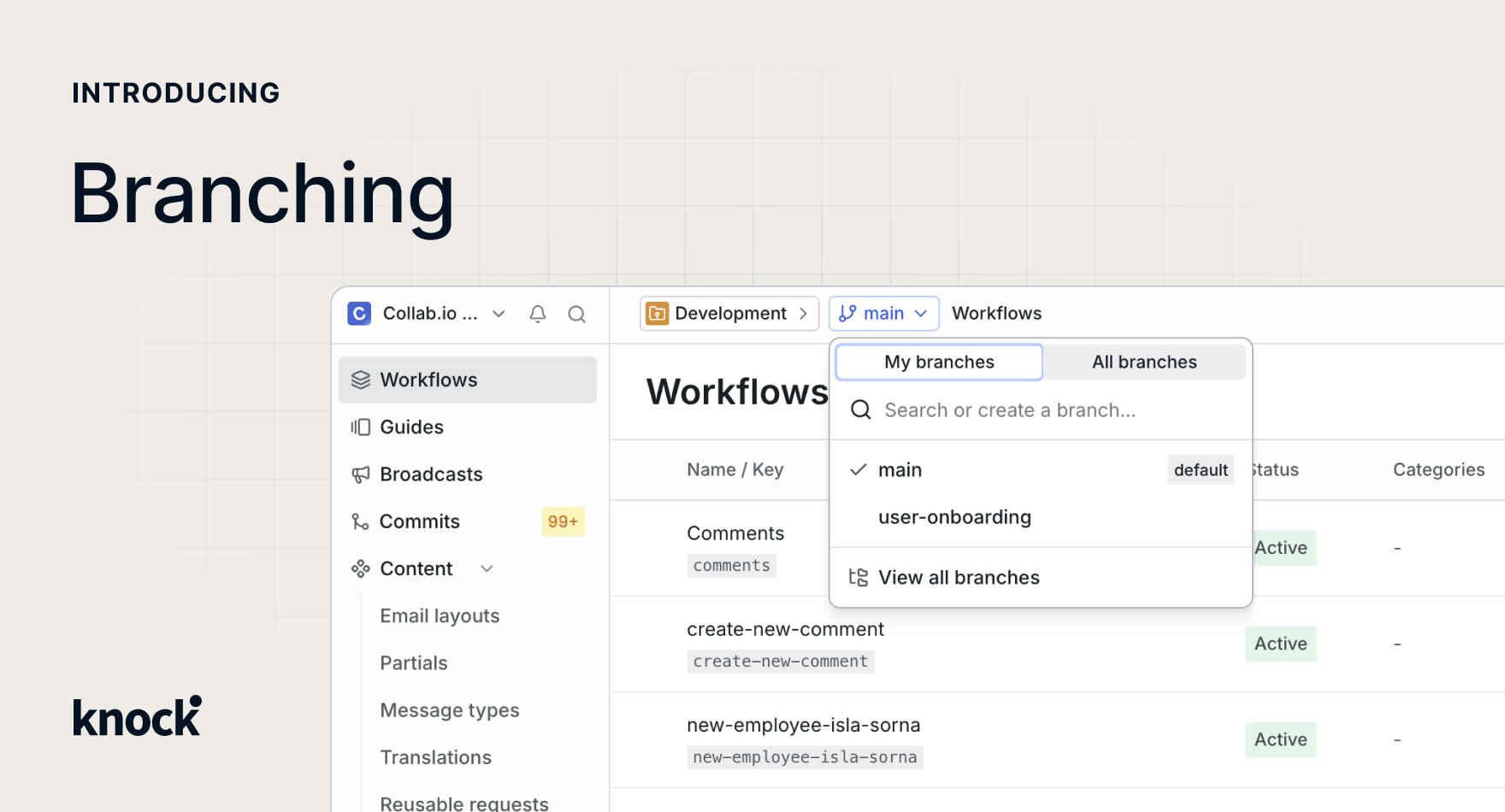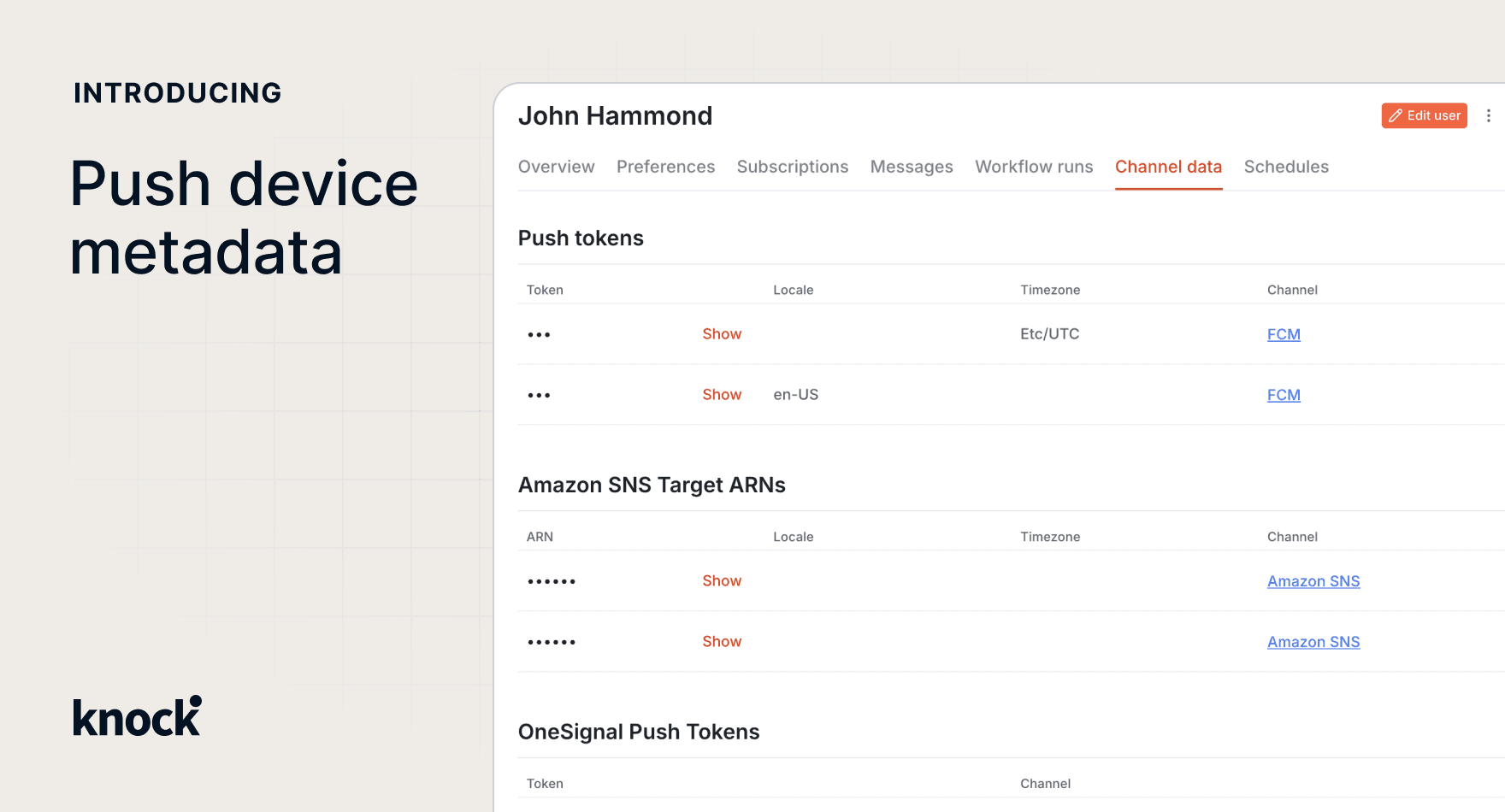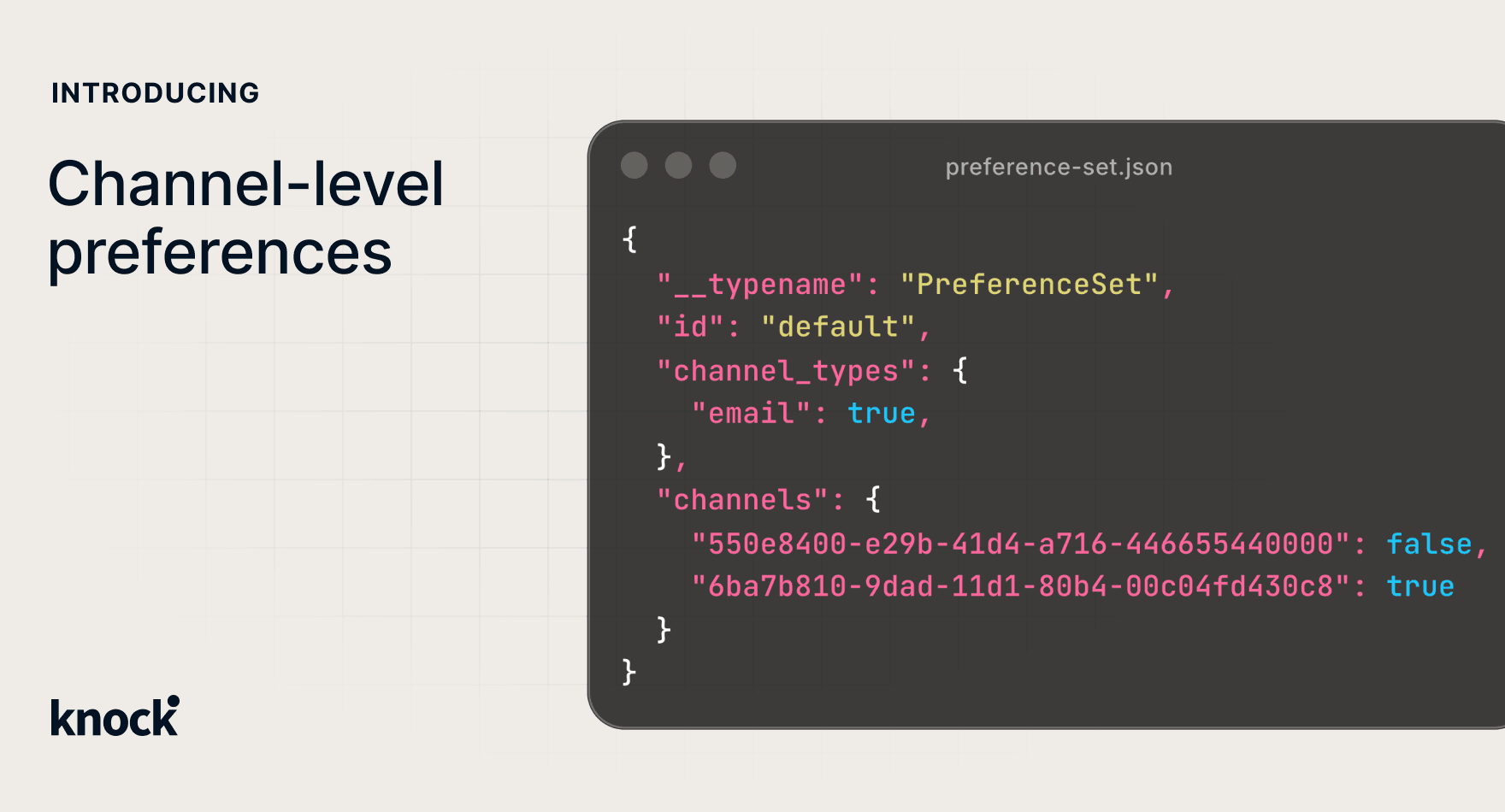Today we're excited to announce the beta release of branching, a new way for developers to work together in Knock.
Previously, all changes to versioned content in Knock had to be made in your development environment. That meant if you had multiple developers using Knock, changes needed to be carefully coordinated.
With branching, each developer can make changes in an isolated branch. Once changes are complete, the branch can be safely merged back into the development environment.
Branch management is deeply integrated into our management API and CLI, allowing you to use branching as a part of your everyday developer workflow or automate branches with your CI/CD pipeline. In addition, branching makes it possible to use Knock in preview environments, like those used by Vercel or Netlify. That means your team can test notification workflows end to end alongside other feature changes.
Branching unlocks an even better developer workflow within Knock, and we're excited to make it available today to all customers. If you're interested in trying out branching, you can request access from the dashboard on the Settings > Branches page. You can learn more in our documentation.










